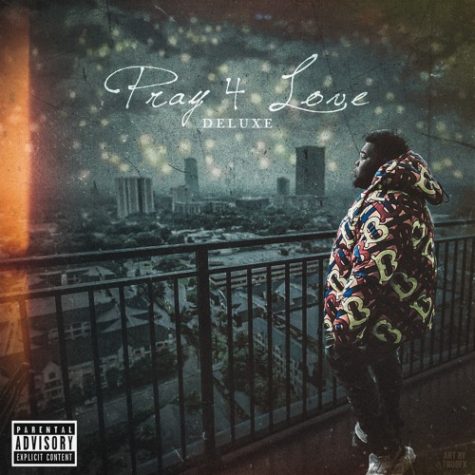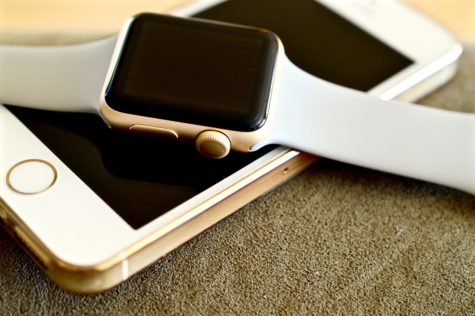Bad Apples: How Apple’s Predatory Practices Affect the Consumer

Alright so it’s pretty obvious that Central Catholic is a predominantly Apple-favoring community so I just needed to share this information to hopefully open some eyes. Apple Inc. uses a lot of, shall we say, not so savory methods for profiting and ‘innovation’, especially in the years after Steve Jobs’ death. So you peel the plastic off that brand new iPhone you got for Christmas and you are prompted with a couple screens of information asking you to set up an Apple ID. Not so bad. Then they ask you if you’d like to sync your phone with the iCloud which sounds nice until you realize that you have just sold your soul to Apple. Every app, song, in-app purchase, ringtone, etc. that you buy, have all been locked to your Apple ID. This makes it nearly
impossible to transfer away from the Apple ecosystem.
Apple introduced their new, proprietary Lightning cable which can only be used with Apple devices. If you go to a friend’s house and they don’t have an Apple device, they will have the universal USB Type C cable, which most phones can use, but not iPhones. Apple sells itself as being different, but that is not always a good thing when it gets in the way of practicality. Then, to further market the Lightning cable they removed the 3.5mm headphone jack that had been an industry standard for headphone use. Then they made special Earpods that have a Lightning adapter on the end and Airpods, the easily lost, bluetooth headphones no one asked for.
Now, the first step of Apple’s plan is set in motion and they have locked you into their ecosystem by trapping your purchases and selling you Lightning cables. So, as phones do, your iPhone is starting to slow down and get full. Maybe you dropped it a couple of times and had to get an overpriced screen repair. You know that Apple’s new, better phone is right around the corner so you hold off and wait for the next generation of iPhones. Every few years a new ‘generation’ of hardware rolls around and the last one we experienced was in 2016. That year, three new flagship phones were introduced: the Google Pixel, Samsung Galaxy S7, and the iPhone 7. So many people were excited to get their hands on the innovation that they would bring and, much to the chagrin of iPhone users, the iPhone 7 Plus fell flat on its face when it came to specs.
| Phone | iPhone 7Plus | Pixel XL | Galaxy s7 Edge |
| Price | $769 | $769 | $769 |
| Weight | .41 Lbs. | 0.37 Lbs. | .35 Lbs. |
| Battery Life | 2900 mAh Battery | 3450 mAh Battery | 3600 mAh Battery |
| Screen | HD LCD Screen | Quad-HD AMOLED Screen | Quad-HD AMOLED Screen |
| Power | Best Quad Core Processor | Quad Core Processor | Octa Core Processor |
| Camera | 12 Megapixel Camera | 12.3 Megapixel HDR+ Camera | 12.3 Megapixel Camera |
It was clear that Apple consistently cut corners and skipped out on upgrading their technology to the industry standards of that year. People still bought the iPhone though, mainly because they were stuck in the trap from their previous iPhones or because they fell for the marketing of the double camera functionality of the iPhone 7 which was an obvious gimmick considering the Pixel, too, had a portrait mode with only one lens.
In September of 2017, Apple announced its next wave of iPhones that would grace the market with their presence. The iPhone 8 and X claim to innovate the iPhone beyond anything it was before. The iPhone 8 costs $799 and the X, $999. One would assume that the iPhone 8 would improve the issues that the iPhone 7 had and make it worth the price with about $30 of upgrades, making it more of an iPhone 7 Plus Plus. The iPhone 8 does not live up to this expectation though. It has a smaller battery than the 7, wireless charging, and a faster processor. The low powered parts of the iPhone 7 are the same in the 8 and Apple had the idea of charging $30 extra for wireless charging. That is not something you can do reasonably when the phone was massively overpriced to begin with.
The iPhone X on the other hand is a massive innovation… in marketing. Apple has somehow managed to justify charging an extra $200 from the already overpriced iPhone 8 while improving nearly nothing to the device itself. The Anniversary Device’s battery is still smaller than the 7. Its screen is just .2 inches larger than the 7 because of the removal of the bezel. The phone is just an iPhone 8 with facial recognition that has flaws, an OLED screen, and a fancy name. That is worth $200 according to Apple, who can produce an iPhone X for just $300-$400 a device. I feel like it’s also worth mentioning that OLED screens, wireless charging, and facial recognition have been available on Android and Windows 10 devices since late 2015.
In reality people are obsessed with their smartphones and as long as they can pump out hundreds of snaps per day, they will be fine. The issue is that Apple uses these practices of marketing and persuading customers that are obviously predatory. Central Catholic students are lucky enough to receive iPads, and they are very useful tools, as are iPhones and MacBooks. Specs are not everything by any means, I just wanted to inform people that they may be paying a hefty premium for the iPhone name or to stay in the Apple ecosystem so as to not lose their songs and apps. The iPhone 8 and X are probably great devices that can actually run the most recent version of iOS at a reasonable speed, unlike the iPhone 7 with its infamous slowdown issues, but that is no excuse to upcharge them by so much. Going into the future of technology, just be wary of prices and how they truly affect the device as a whole and as a product that you will use on a daily basis.













